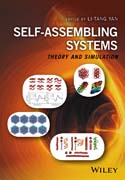
Very first book to provide comprehensive knowledge on concepts, theoretical methods and state–of–the–art computational techniques for the simulation of self–assembling systems Divided into three parts covering the basic principles of self–assembly, methodology, and emerging topics Looks at the field of self–assembly from a theoretical perspective Highlights the importance of theoretical studies and tailored computer simulations to support the design of new self–assembling materials with useful properties INDICE: List of Contributors .Preface .Chapter 1: Theoretical Studies and Tailored Computer Simulations in Self–Assembling Systems: A General Aspect .Chapter 2: Developing Hybrid Modeling Methods to Simulate Self–Assembly in Polymer Nanocomposites .Chapter 3: Theory and simulation studies of self–assembly of helical particles .Chapter 4: Self–consistent field theory of self–assembling multiblock copolymers .Chapter 5: Simulation models of soft Janus and patchy particles .Chapter6: Molecular Models for Hepatitis B Virus Capsid Formation, Maturation and Envelopment .Chapter 7: Simulation studies of metal–ligand self–assembly .Chapter 8: Simulations on cell uptake of nanoparticles: membrane–mediated interaction, internalization pathways, and cooperative effect .Chapter 9: Theories for Polymer Melts Consisting of Rod–Coil Polymers .Chapter 10: Theoretical and Simulation Studies of Hierarchical Nanostructures Self–Assembled from Soft Matter Systems .Chapter 11: Nucleation in Colloidal Systems: Theory and Simulations .Chapter 12: Atomistic and Coarse Grained Simulation of Liquid Crystals
- ISBN: 978-1-119-11314-0
- Editorial: Wiley–Blackwell
- Encuadernacion: Cartoné
- Páginas: 384
- Fecha Publicación: 09/12/2016
- Nº Volúmenes: 1
- Idioma: Inglés
